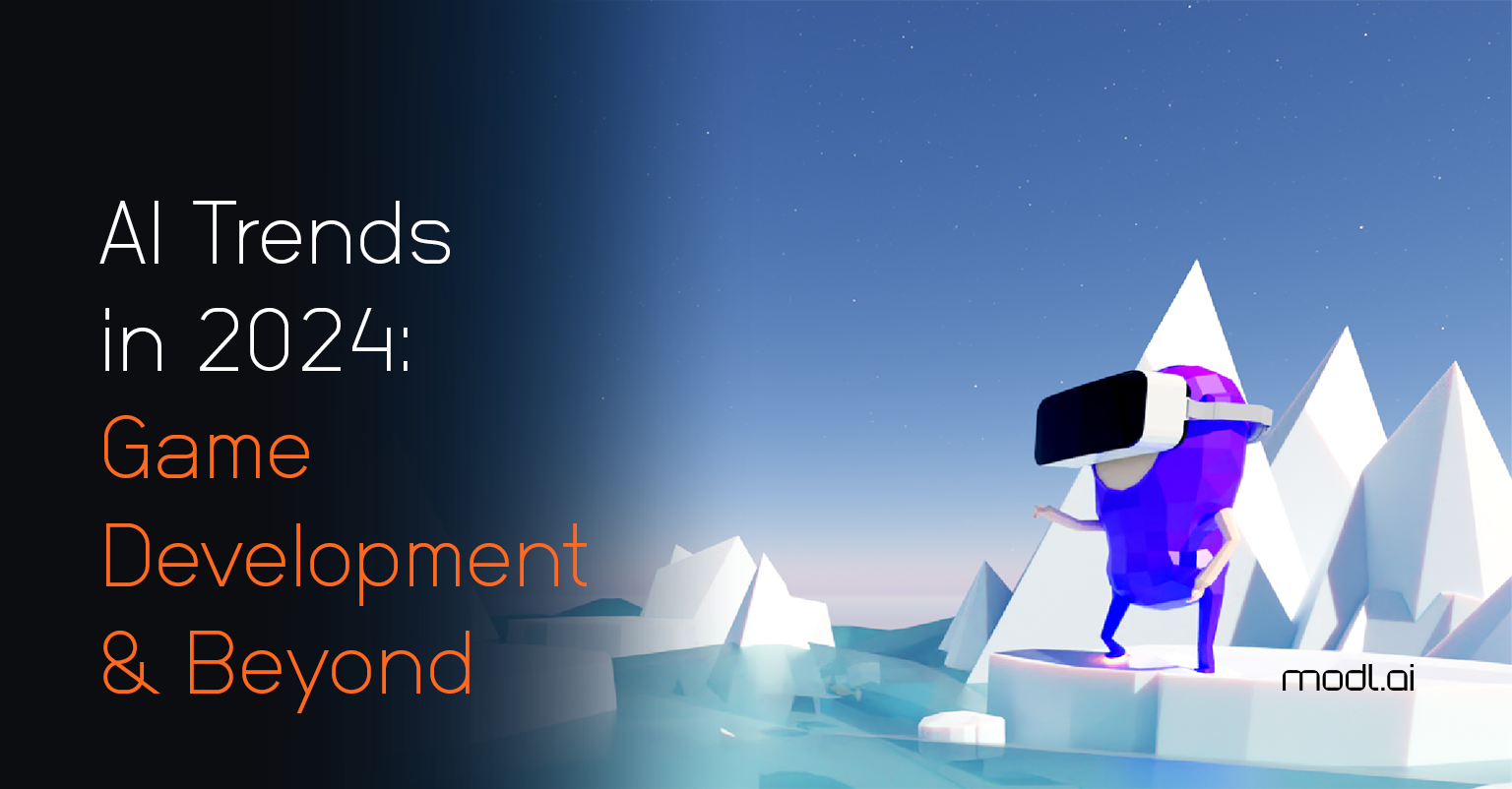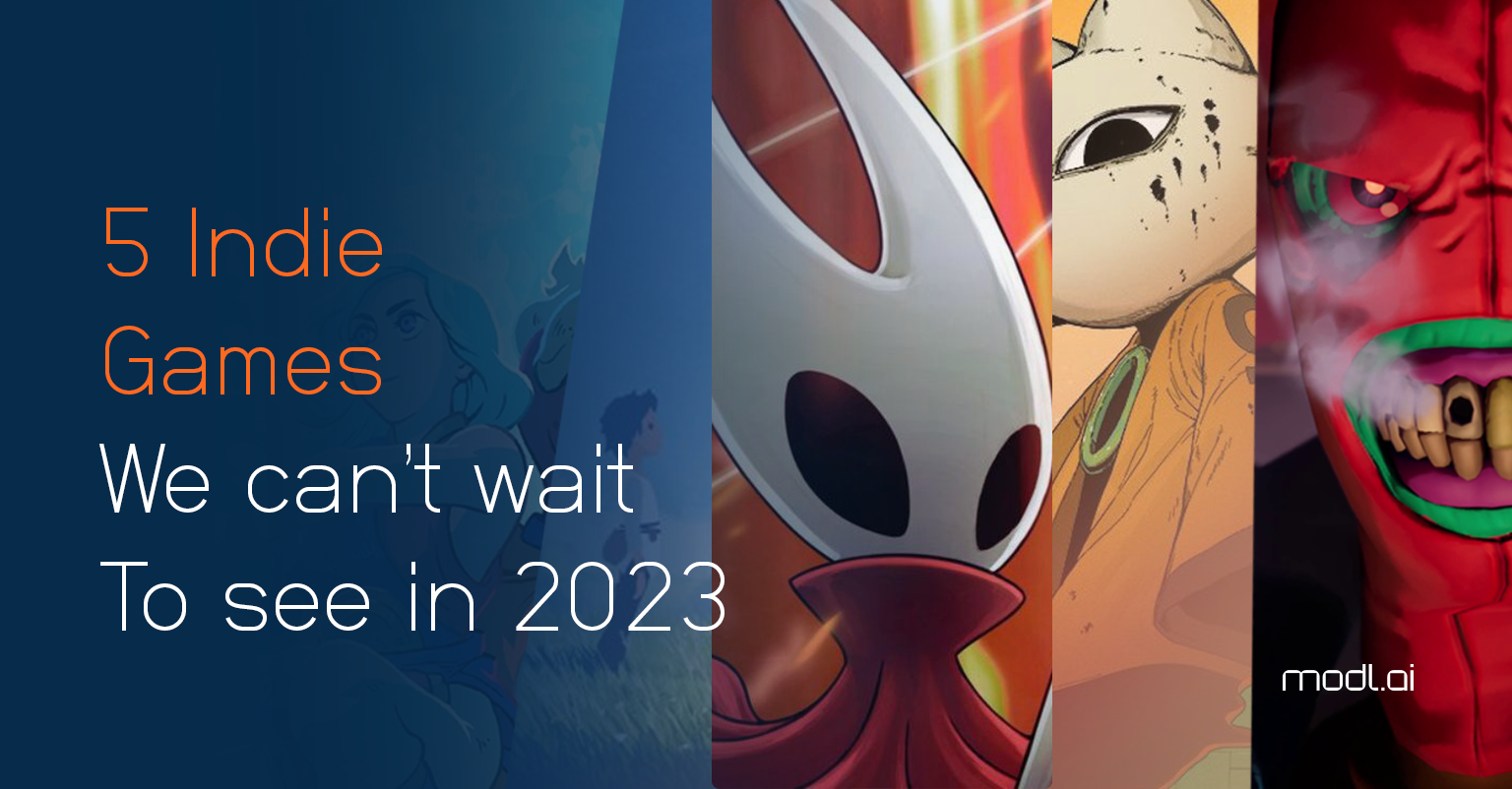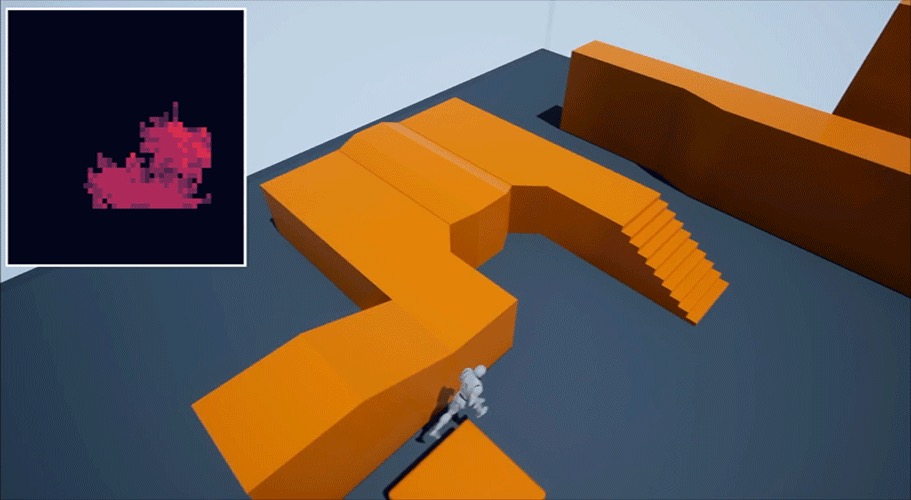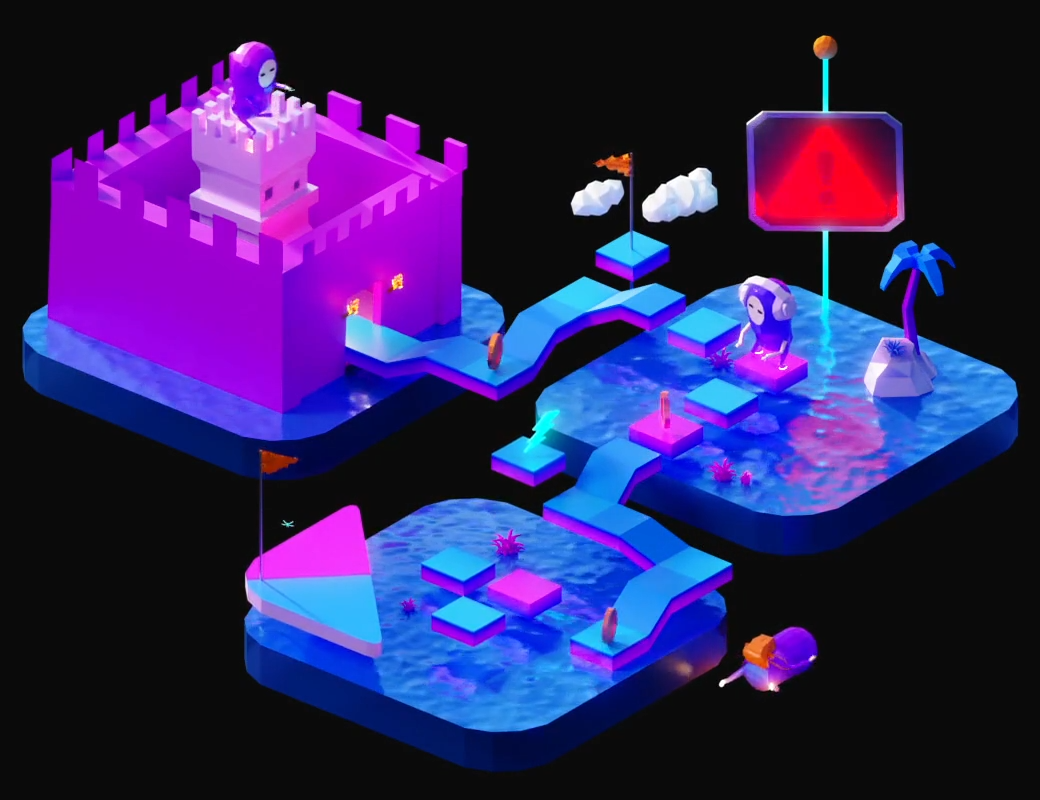Just in the past year alone, we saw a massive evolution in both the adoption and the utility of AI, but what does the near future hold? The following topics are expected to emerge in 2024 and are worth keeping an eye on over the next year, especially for game developers.
1. Game Development and Gamer Experience with AI
AI has and will continue to transform the gaming experience in new and unforeseen ways. The latest gaming trends include technologies such as automated game testing, personalized gaming experiences, and procedural content generation. In 2024, AI-powered gaming will allow gamers to enjoy more realistic perceptions of virtual worlds, customized gameplay, and natural interaction with in-game characters. An area that may see rapid movement over the next year is the intersection of AI, virtual reality, and augmented reality (AR). Combining digital content with physical space will enable solutions, such as Meta’s Quest and Apple’s Vision Pro headsets, to break new ground in virtual reality.
These types of applications cannot function without AI, but the introduction of this kind of technology opens a whole host of new AI challenges for developers to grapple with. AR developers must fit the world into a game experience—or fit a game-world experience into the real world around the user. A technique that may prove to be a boon for this and other areas is called Neural Radiance Field (NeRF). NeRFs are used to generate 3D representations of an object or scene from 2D images using advanced machine learning. This essentially means games, movies, and AR solutions can take a 2D image, such as a JPEG, and turn it into a 3D object that one can study from every point of view—or generate a room that a player may walk around in and interact with the stuff throughout the space.
2. Voice Synthesis Technology
Voice synthesis is, without a doubt, a rapidly growing area of AI. This technology is continually generating more realistic-sounding voices that are indistinguishable from actual human voices in general, as well as specific individual people’s voices. As the world becomes more connected, AI-powered virtual assistants, such as Siri, Alexa, and Google Assistant, have become integral in our daily lives. The trend to watch in 2024, AI voice technology will become even more advanced, improving the engagement between users and AI-powered devices. The development of natural-sounding voices will transform how we communicate, from assisted phone calls, customer service, and navigation guides, to audiobooks, movies, video games, and more.
Between 2022 and 2023 alone, there was a rapid and substantial improvement in the quality of voice synthesis technology. The gaming industry, particularly small game studios, can significantly benefit from using AI voice synthesis to create voices for their games. This technology can then enable smaller studios to create content with voice acting and voice-based features in a more cost-effective way, where it previously would have been infeasible. The Screen Actors Guild – American Federation of Television and Radio Artists (SAG-AFTRA) recently announced a deal with Replica Studios regarding the licensing and use of AI digital replicas of actors’ voices. The deal states that “Licensed voices can be used in video game development and other interactive media projects from pre-production to final release.” While some studios may be pleased with this action, many actors felt they were blindsided and expressed concern and confusion, if not outright anger, on social media. Many said they did not want their voice to be used at all, in any form except from their own mouths.
3. AI and Legislation
As AI continues to evolve, the role of legislation in regulating AI will become more prominent. In 2024, governments around the world will focus on drafting and adopting new AI regulations to ensure safety, compliance, and transparency. Legislation is becoming clearer and guiding AI technology use in various industries, such as entertainment and gaming. This clarity will inform how companies will use AI systems within their own walls.
At the end of 2023, The European Union’s parliament agreed on the details of the AI Act, a broad, sweeping set of rules to govern the building and use of artificial intelligence. The EU hopes this milestone law will serve as a blueprint and light the way for the rest of the world as it grapples with how to use this technology. The law includes several bans, including biometric categorization systems that use sensitive characteristics (e.g., political, religious, philosophical beliefs, sexual orientation, race); untargeted scraping of facial images from the internet or CCTV footage to create facial recognition databases; emotion recognition in the workplace and educational institutions; social scoring based on social behavior or personal characteristics; AI systems that manipulate human behavior to circumvent their free will; AI used to exploit the vulnerabilities of people (due to their age, disability, social or economic situation).
Those found in violation of the law will face hefty fines ranging from 35 million euro or 7% of global turnover to 7.5 million or 1.5% of turnover.
In North America, the U.S. Copyright Office is making legislative moves that will be critical to the use of systems such as generative AI. Regulations in this area, particularly regarding copyright issues and content, image and voice asset ownership, could create new protections and compensation for actors and creators whose voices and likenesses are used in AI-generated content. With AI’s ability to replicate a popular actor’s voice, such as Morgan Freeman’s, by capturing enough data points, the ownership and licensing of actors’ voices have significant implications.
With the rise of new copyright and other laws internationally, companies may find themselves in the hot seat in ways they have never had to worry about before. This includes the makers of AI systems as well as the users of them. For example, The New York Times is the first major U.S. media organization to sue OpenAI and Microsoft (ChatGPT) over the unauthorized use of copyrighted material to train AI.
One area that has recently gained more clarity is assets, such as games, that use generative AI in their creation. According to U.S. Copyright, work created using generative AI can be rejected for copyright because a human did not create it. That alone will cause many game development companies to hit the pause button on leveraging AI because for many, their existence depends on how well they protect their IP and content. Large publishers will eventually be able to pull from massive data sets they own internally. This will enable them to build and use AI technology inside their walls without running into copyright issues. Smaller firms don’t have access to such libraries, but many are not as risk-averse and so may be willing to leverage what they can without worrying as much about obtaining copyrights and protecting their IP. As such, there is currently a great deal of experimentation being conducted behind the walls of big and small companies.
Future legislation is and will be crafted in an effort to ensure AI is not used negatively, such as in the creation of deepfakes or malicious AI applications. Whether such laws will be effective in the long term will be determined by how well they are written in the short term.
4. Democratization of AI
AI is no longer limited to a selected few. In 2024, due to the evolution of ChatGPT and others, AI will become even more widely accessible to individuals and businesses of all sizes. Additionally, the market has seen a drop in the costs of cloud computing, and there is a wave of newly educated AI experts making their way into companies around the world.
This increased accessibility will lead to a democratization of AI technology, enabling people to realize its potential, understand its applications and experiment with new insights. AI innovations specifically designed for game publishers are starting to become available that push the boundaries of what is possible. For instance, Unity recently announced several platform updates to better support how game developers “realize their vision and run successful games.” This includes solutions such as Muse Animate, which allows developers to set characters in motion without code and Unity 6, the company’s next major update will include more AI support, next-level mobile features and innovative VR device support.
Other generally available AI tools, such as automated machine learning (AutoML), provide some advanced tools, processes and methods to make ML available for people who are not experts; according to AutoML.org, some examples are, AutoWeka, Auto-sklearn and Auto-PyTorch. The aim is to improve efficiency of ML and to accelerate research on ML, will introduce a new era of data analysis and many other applications in various industries, allowing businesses to make more informed decisions and improve their overall productivity–but scaling the adoption poses a major challenge. The prospect of committing resources to AI implementation can be daunting, especially if the technology is novel and untested and the company is particularly risk-averse. Despite these challenges, though, adopting AI will continue at a breakneck pace but implementing AI appropriately, legally and ethically will require thoughtful consideration, strategic planning, and a willingness to embrace change.
Conclusion
AI has already brought about notable transformations across industries, and these trends promise to deepen that impact in the years to come. In the next few years, new legislation about artificial intelligence, AI democratization, AI-powered personalization, game content generation, quality control, smart automation, along with accessibility improvements will begin to take center stage in new and even more powerful ways.






